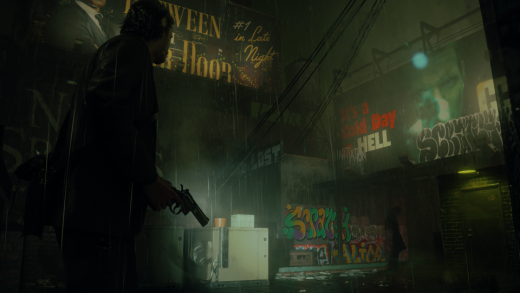Alan Wake II is great, but it doesn’t need guns
Alan Wake II is great, but it doesn’t need guns
Bullet sponges are not scary.
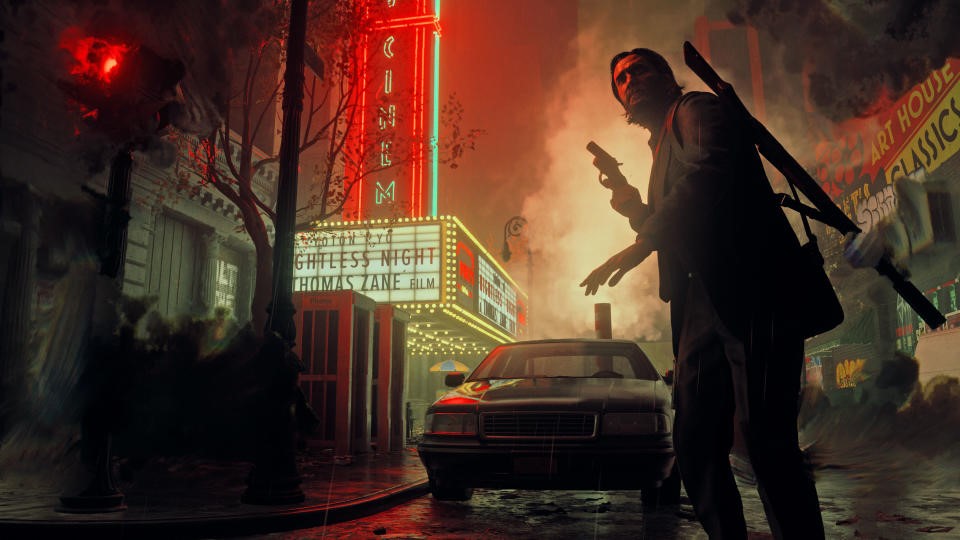
Alan Wake II is a fantastic game. It tells a twisted, serpentine story of paranormal murder, shifting realities and demonic possession, with two brooding investigators at its core. Developers at Remedy Entertainment are masters of mood and Alan Wake II is their latest showpiece, highlighting the studio’s eye for psychedelic terror and complex mysteries. This game is packed with monsters, ghosts, cults, Old Gods, rock operas and mind-bending perspective swaps. And on top of all that, its character models and set pieces are absolutely gorgeous. Even though it just came out at the end of October, it’s no surprise that Alan Wake II is nominated in multiple categories at The Game Awards, including Game of the Year.
There’s a lot more than clue-gathering going on in Alan Wake II. The game regularly mixes full-motion video with CGI in a way that doesn’t feel silly or contrived; set in a universe of broken realities, the visual styles bleed into each other like alternate timelines fighting for dominance, fitting both the narrative and mechanical storytelling on display.
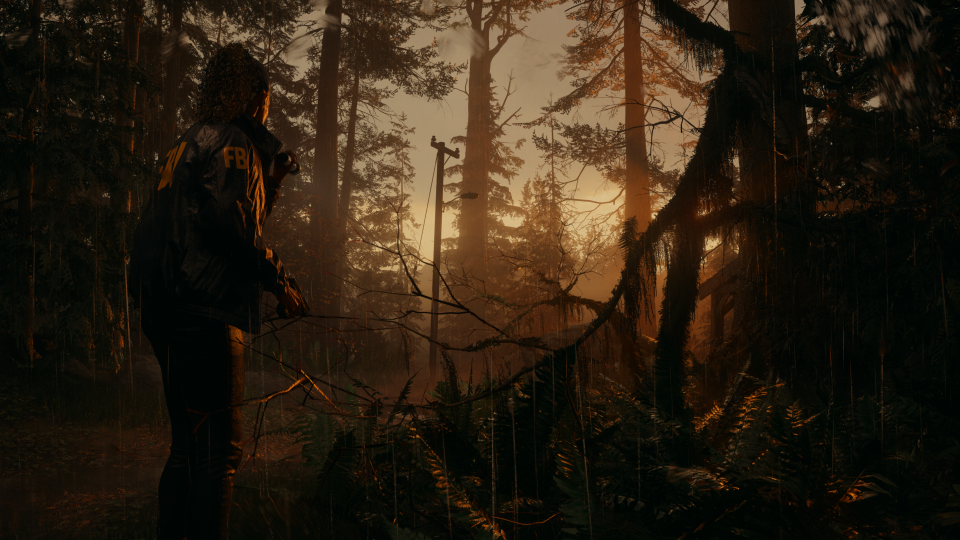
There are two playable characters, Saga Anderson and Alan Wake, and they’re each able to escape inside their own mind to solve the mysteries at hand. Saga, the stoic FBI agent, has a Mind Place where she can connect pieces of evidence with red string on a large, wood-paneled wall, and she can also profile people of interest, using her intuition to speak with their subconscious selves and uncover their secrets. Alan, the author who’s been lost in purgatory for 13 years, has a Writer’s Room with a plot board that literally alters reality when he adds new ideas to it. Players are able to switch between Saga and Alan throughout the game, as they attempt to crack the same case from opposite sides of the underworld.
Both of their environments have been infiltrated by shadow people, the standard enemies in this universe. The black silhouettes, glitching around the edges and hissing Alan Wake’s name, are affected by light — many of them fade away under the beam of a flashlight, but some of them transform into corporeal enemies and immediately attack, requiring multiple gunshots or one strong explosion to take them out. Saga and Alan can find temporary solace under lampposts and other well-lit areas, but these tend to flicker out in the heat of combat.
Which brings us to my issue with Alan Wake II, a game I very much enjoyed and highly recommend. Because I can still hear the furious typing from people who won’t read a negative word about something they love — please remember, it’s possible to enjoy something and also discuss what it could’ve done better. In the case of Alan Wake II, this means removing the guns.
There’s a delicious undercurrent of tension running beneath Alan Wake II, propelled by dark corridors, gruesome rituals and a creeping wave of personal loss. This sense of unease builds throughout the story and bursts through the screen in jump-scare vignettes as the characters’ situations become more desperate. Mystery is the heart of Alan Wake II’s horror. Unfortunately, the slow-burning narrative tension is routinely interrupted by gunplay, replacing it with a different, harsher kind of anxiety that feels out of place in this survival horror experience.
Again and again, I’d be exploring a new area, mentally putting the clues together as the story unspooled, when suddenly — time for a gunfight. The tone would immediately shift from dark, inquisitive terror to pew pew pew, replacing my train of thought with standard action-game things like landing headshots and dodging. After the scuffle, it would take a long moment for me to find the rhythm again, remind myself what I was looking for, what was at stake, what reality I was in. The tension and terror would start to build again, and then — another gunfight.
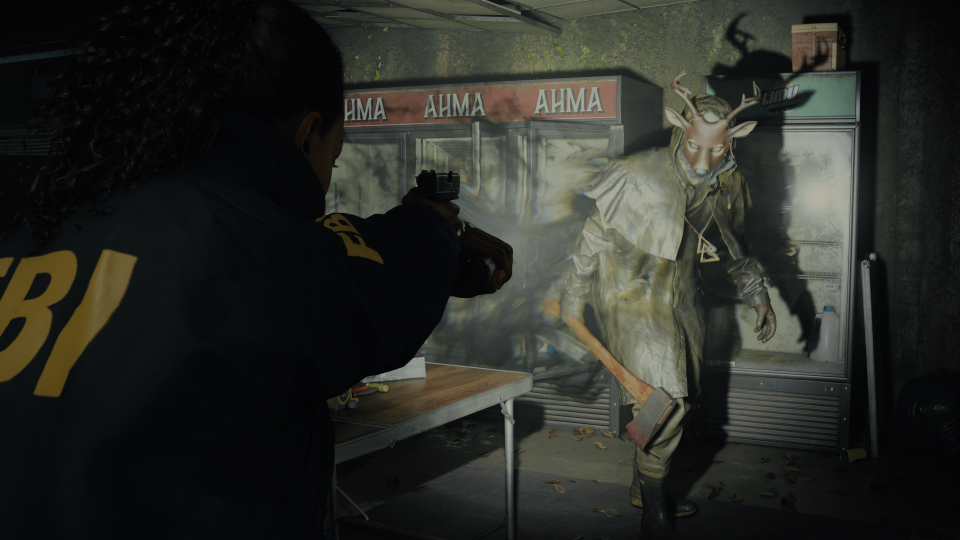
There’s nothing wrong with the combat in Alan Wake II, but it isn’t revolutionary and it doesn’t serve the game’s narrative. It’s an unnecessary interruption. Alan Wake II has intense detective work, horrific setpieces, paranormal drama, reality-shifting mechanics, secrets uncovered with light, two versions of a Sherlock-style mind palace, small puzzles, grand mysteries, murderous demons and plenty of action without guns at all.
Light is the shadow people’s weakness, and Saga and Alan both carry flashlights for most of the game. Turning on the high beam stuns the shadow enemies and sometimes opens weak points in their chests. Light hurts the ghosts, but it doesn’t kill them. To kill the ghosts you need bullets. I find this concept silly enough, but there are also scenes where the ghosts have guns, which is downright hilarious. On top of that, some of the shadow people are true bullet sponges, eating eight to twelve shots before going down. This sucks in general, but it’s especially egregious in a horror game, as it replaces feelings of dread with frustration and bullet math. Tediously shooting a ghost eight times instead of one doesn’t make an encounter any scarier.
With light as a weapon, Alan Wake II doesn’t need guns. Activating the high beam already uses precious battery power, and both Saga and Alan have to find batteries hidden around their environments, keeping resource-management fears alive. There are scenes where a flashlight and weapon combination actually works well — mainly, the flashlight and flare gun offer a swift one-two punch for standard enemies, preserving the panic of an attack while offering twitchy combat moments that don’t interrupt the overall vibe. Here, the gun is secondary, while the light does most of the work. In terms of game logic, this makes way more sense than a ghosts-and-guns approach.
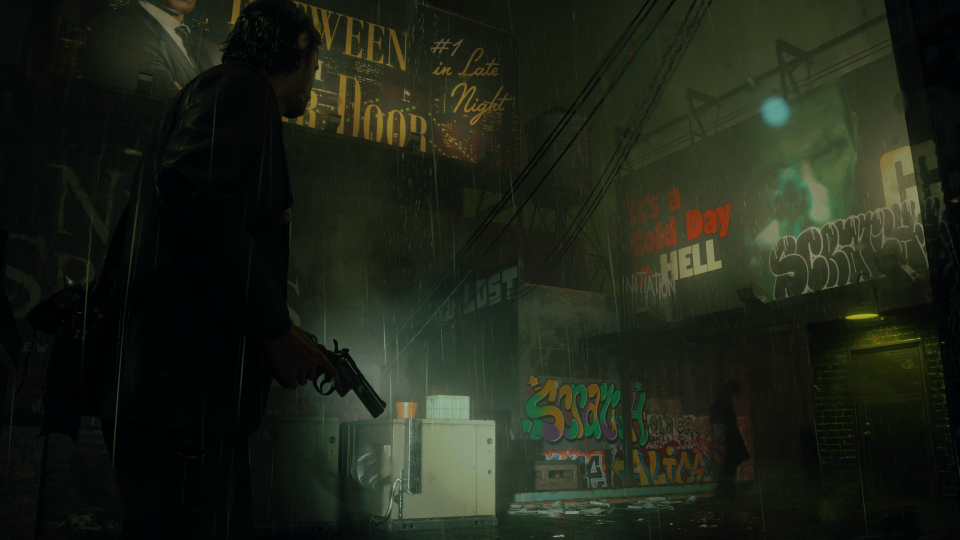
Remedy is calling Alan Wake II the studio’s “first foray into the survival horror genre,” which makes its reliance on guns and even more perplexing. Regardless of whether Alan Wake II is more of an action horror or survival horror game, I’m most concerned with how it serves horror. In this regard, the gunplay just gets in the way.
I turned on story mode about two-thirds through my playtime, and I didn’t feel cheated out of any tension or terror; the enemies were still scary, and the game’s puzzles remained challenging. Remedy does weird stuff really well, and Alan Wake II is grotesque, mind-melting and darkly soapy, like The X-Files or Twin Peaks, with a touch of Outlast and Resident Evil 4. I just wonder what game we would’ve gotten if the developers didn’t design around basic third-person shooter tropes (feel free to save those for Control, Remedy — guns make sense in that game).
You know how every big-studio action movie nowadays feels like a modified version of Iron Man? The Marvel Cinematic Universe set the modern standard for big-budget action flicks, and it seems like many other movies now attempt to imitate its tongue-in-cheek tone, the epic scale of each battle, its predictable narrative flow and climax, the green-screen action scenes, its cliffhangers and after-credits scenes. A similar phenomenon is occurring with big-budget mainstream games, where there seems to be a formula that developers attempt to emulate, and this includes gunplay with hordes of bullet-absorbing enemies.
It feels like Alan Wake II fell victim to this unnecessary constraint, with negative consequences for the game’s sense of storytelling and terror. I get it — guns, ammo and inventory management are a familiar, accepted mechanic in video games as a whole, which makes firearm combat an easy element to include in mainstream titles. I just don’t think Alan Wake II needed it to be successful.
(3)

